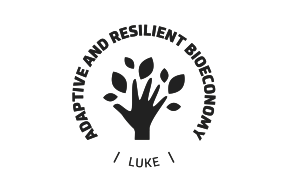Green Care activities contribute to place-based sustainability
Nature-based wellbeing services, such as Green Care practices, are designed to benefit wellbeing and health of specific target groups. According to a PhD study carried out by Angela Moriggi at the Natural Resources Institute Finland (Luke), practitioners of these services do not care just about the well-being of their clients, but also their own environment and community as well.
Green Care services refer to a variety of practices that use natural environment, nature or animal assisted activities to support human well-being, social inclusion, recreation, and learning. Green Care service providers are working either in public or private sector.
In order to successfully construct effective wellbeing initiatives, values and emotions matter greatly for these entrepreneurs and actors. The practitioners featured in the study were motivated to engage with specific sustainability-informed concerns, such as the problem of social exclusion, sense of disconnection of humans and nature and a general love for nature.
“It is important to see Green Care practitioners as more than just service providers. They can be social innovators with broad social and ecological values, whose initiatives have beneficial impacts for the wider community and ecosystems,” says Angela Moriggi.
Green Care practitioners enhance place-based sustainability. It takes a range of both material and immaterial resources to provide nature-based wellbeing services. Using local resources the service providers promote and enhance place-based sustainability. At the same time, Green Care type of practices shape the local context by sustaining, appreciating, and enhancing local resources.
In addition, practitioners influence the development of social relationships while interacting within their cultural and natural surroundings. Nature-based wellbeing providers are social innovators, interfacing diverse sectors of society, creating new networks and co-operational models, and thus contributing to valuable place based social capital. Local context and resources are crucial for their success. They offer novel solutions to meet social needs and to enhance societal well-being.
Green Care practitioners typically choose business models and economic relations that put people, social value creation, and local issues and needs, at the center of their goals and activities. In social and care farming, Green Care practices enable rural entrepreneurs to diversify their income flows and revitalize the social fabric of marginalized areas, thus promoting smart, inclusive, and place-based development.
“Policy makers and researchers should give value to the full range of influences performed by Green Care practitioners, and especially recognize and support their contributions to place-based sustainability,” addresses Katriina Soini.
According to the study nature-based service providers are engaged in networking, outreach, and capacity building activities that have spillover effects on the surrounding communities, beyond their own enterprise. As social innovators, Green Care practitioners act upon their concerns, and initiate a wide range of (caring) practices. They contribute to raising awareness about social needs of vulnerable groups and engage citizens in the community to respond to those needs, thus enhancing social ties and wellbeing for the whole society.
Their initiatives have wider potential beyond the provision of social services. The practitioners have deep ecological values which run counter to the dominant economic models that over-exploit natural resources. Their practices, like maintaining and preserving traditional architecture and landscapes of rural areas, contribute to the quality of life and the overall quality of the places (or re-appreciation of the places) where they are based. Green Care practitioners have the potential to help rural locations become more desirable and vibrant places to live and to recreate.
“There are a lot of Green Care service providers that are committed to promote high quality Green Care -services. The Summary report based on the key findings of the PhD that adds important research-based information for the use of various groups interested in to develop further Finnish style of Green Care,” confirms Elina Vehmasto, the lead author of the Green Care quality manual.
- Moriggi A., Soini K., Vehmasto E., Roep D., Secco L. & Uosukainen M. 2023. Caring for people and nature. A summary report on Green Care and place-based sustainability in Finland. Natural Resources and bioeconomy studies 102/2022. 57 p. Natural Resources I
- Moriggi, A. 2021. Green Care –practices and place based sustainability transformation. A participatory action-oriented study in Finland. WASS, Rural Sociology.
The Finnish approach to Green Care
Over the last 20 years, ‘Green Care’ has been used in Europe as an umbrella term to describe a range of nature-based activities that address various social needs. Social and care farming, therapeutic horticulture, animal-assisted interventions, forest-based care, and nature-based recreation and pedagogy are examples of popular Green Care activities.
Green Care is a growing phenomenon in Finland. It covers a wide range of diversified services and is distributed evenly across the provinces. Green Care practices not only provide social services, but also have potential to support place-based sustainability.
The concept Green Care landed in Finland by MTT’s researchers around 2005, while the researchers were participating in various European development networks in the field. The first Finnish development projects started shortly after that. The definition process of the Finnish Green Care was carried out in a wide multidisciplinary cooperation, between years 2010 to 2014.
In the Natural Resources Institute's project, a quality mark system was created in close cooperation with Green Care Finland Association (GCF). In the beginning of the year 2017 the quality board of the GCF Association started to operate. At a moment around 50 quality marks have been granted withing the quality brands of LuontoHoiva and LuontoVoima.
The latest version Quality Manual for Finnish Green Care was published in the beginning of the year 2021 by Luke researchers and members of the Quality board of GCF Association. http://urn.fi/URN:ISBN:978-952-380-189-9



